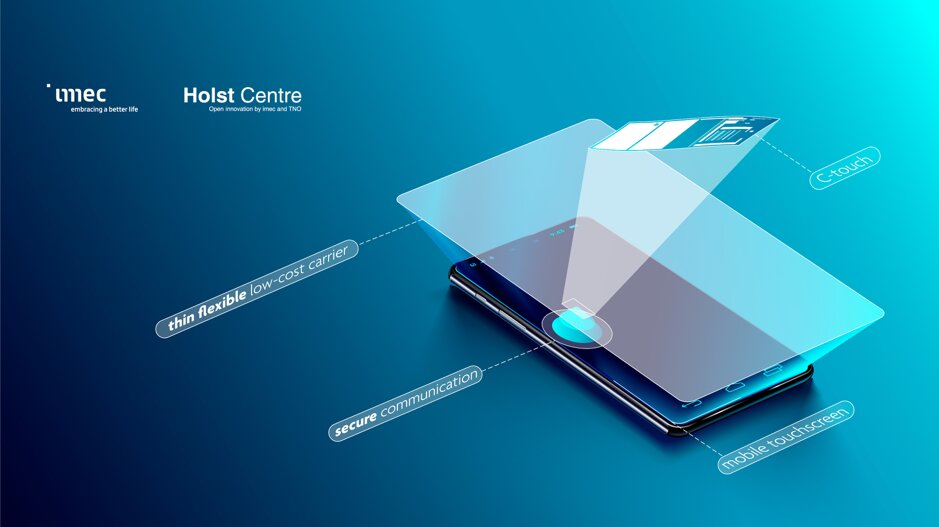
Image Credit: imec
A research team in Belgium has established a new method for transferring data across touchscreen devices using 12-bit, thin-film, identification tags that use batteries or photovoltaic (solar) cells to power them.
The Era of the Internet of Everything
Touchscreens have become common across modern electronic devices, from smart phones to tablets, and even to smart home devices and cars. Touchscreens have become a firmly established method of communicating with our smart devices in this time where the Internet of Things has already begun to define our societies.
Currently, our numerous devices are connected to cloud-based services via a range of wireless communication protocols, such as Bluetooth, WiFi, and 5G/4G, using silicon complementary metal-oxide-semiconductor (CMOS) chips. However, to usher in the era of the Internet of Everything (IoE), where the intelligent connection of people, process, data, and things will become standard, these devices will need to be equipped with low-cost, seamlessly integrated wireless communication chips.
A group of scientists based at the Interuniversity Microelectronics Centre (IMEC) in Belgium recognized the need to devise these new chips. They also identified the potential offered by thin-film transistor (TFT) technology as a method of providing the communication functions required by the IoE. In particular, they selected radio-frequency identification (RFID) tags to be used in this application because of their advantages in being easily incorporated into multiple objects and materials.
In a paper published this month in the journal Nature Electronics, the Belgium-based team describes how they developed a 12 bit thin-film capacitive radio-frequency identification tag that is powered by a thin-film battery, or a thin-film photovoltaic (solar) cell, that enables the transference of data to the touchscreen.
The team created an integrated circuit of thin-film with a 0.8 cm2 on-chip monolithic antenna. The circuit employs 439 transistors and dissipates just 31 NW of power at a supply voltage of 600 mV. They recorded the chip as having an asynchronous data rate of up to 36 bps, a rate limited by the touchscreen readout electronics.
Previously, other novel forms of touchscreen interaction have been created by other scientists who have combined Si-CMOS chips alongside non-conventional off-the-shelf components, such as those with a high off-state resistance required to switch off a touch event, mirroring the action of a finger releasing from the surface of an interface. However, the team wanted to create a method that would improve on previous novel designs.
Potential Future Implementation
The IMEC group of researchers was able to establish a new method of transferring data across touchscreen devices, designing a new capacitively coupled data transfer using a flexible capacitive RFID tag based on TFT technologies and using commercial touchscreens as a reader interface.
Results showed the success of the innovation, reporting levels of power consumption that were four times lower than are produced by the previous 12-bit code generator. In addition, results showed that the power dissipated was just 31 nW with a 600 mV supply, demonstrating the effectiveness of the data transfer technique.
The researchers are positive that the technology that they have developed could easily be implemented across the billions of devices worldwide that would benefit from it, such as the 4.5 billion mobile phones that exist around the globe, a figure which is continually increasing, alongside the abundant number of touchscreen-enabled cars, smart home devices, smart surfaces, tablet and more. They also see this happening at no additional cost to the consumer.
Disclaimer: The views expressed here are those of the author expressed in their private capacity and do not necessarily represent the views of AZoM.com Limited T/A AZoNetwork the owner and operator of this website. This disclaimer forms part of the Terms and conditions of use of this website.